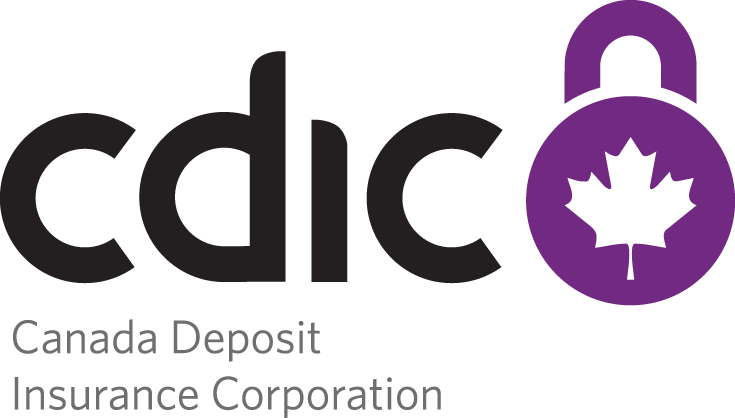Prepaid cards
New financial products enter the marketplace all the time, making it hard to tell what is protected by CDIC.
Sometimes a third-party service provider partners with a CDIC member institution to offer a financial product. When this happens, CDIC coverage can seem unclear.

What are prepaid cards and are they covered?
A prepaid card is a financial product. There are two types of prepaid cards: open loop and closed loop prepaid cards.
You can use closed loop prepaid cards in limited ways. You can use them at certain stores or a group of related businesses. For example, a gift card at a retail store is a closed loop card.
The balance on a gift card (closed loop) is not eligible for deposit insurance.
You can use open loop prepaid cards almost anywhere, like a regular credit or debit card. Most open loop cards have a branded network logo. This allows you to use the prepaid card anywhere that accepts those payment networks.
A common type of open loop prepaid card is a general-purpose reloadable (GPR) card. These are usually offered by financial technology companies (fintechs or neo banks). You can keep reloading these cards, and they usually have other features. Features could include direct deposit, bill payment option, or ATM withdrawals.
CDIC coverage applies to GPR cards when the following criteria are met:
- the funds on the card are held with a member institution
Funds loaded to general-purpose reloadable prepaid cards can be held at a CDIC member institution in different ways. The way funds are held impacts how CDIC would calculate the amount owed in the event of a member’s failure.
How coverage works
In the event of member institution failure, eligible prepaid card funds are combined with the cardholder’s other eligible deposits held at that same member, for up to $100,000 of deposit protection.
For eligible general-purpose reloadable prepaid cards where funds loaded to the card are held with the CDIC member directly in the cardholder’s name, funds would be combined with the cardholder’s other eligible deposits held at that same member, for up to $100,000 of deposit protection.
Not sure if your prepaid card is covered?
Ask these questions to your card issuer or financial institution:
- Are you a member of CDIC?
- Are the funds I load on my card held as eligible deposits at a CDIC member institution?
CDIC’s Deposit Insurance Information By-Law prohibits anyone from making false or misleading claims about being a CDIC member or what constitutes, or does not constitute, a deposit that is insured by CDIC.
Frequently asked questions
- Are general-purpose reloadable prepaid cards eligible for CDIC deposit protection?
- If my prepaid card is eligible for deposit protection, how would CDIC calculate the amount owed in the event of failure of the CDIC member institution?
- Are prepaid gift cards or shopping mall cards eligible for CDIC coverage?
- What happens to my fintech-issued reloadable prepaid card if my fintech fails?
- If my fintech fails, how do I access my funds?
- If I already have deposits in the financial institution that the fintech has partnered with, will it impact my existing coverage?
- My fintech claims to offer CDIC coverage but I don’t see them on your list of members? Is my fintech protected by CDIC?
